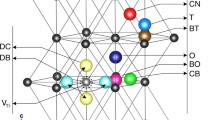Abstract
ELECTRICAL resistivity measurements have been made by many workers on quenched, irradiated or plastically deformed metals, in order to study the production of defects by these various treatments. By observing the recovery of the resistivity on annealing, it is possible to study the mobility of the various defects out of the material or to internal sinks. In this communication we present some results on the mobility of defects, introduced by low-temperature plastic deformation in titanium and zirconium.
Similar content being viewed by others
References
Zartman, I. F., Nuclear Eng. and Sci. Congr. (Cleveland), Preprint No. 89 (1955).
Seeger, A., Second Geneva Conf. Peaceful Uses of Atomic Energy, 998 (1958).
Koehler, J. S., Henderson, J. W., and Bredt, J. H., “Creep and Recovery”, 1 (American Society for Metals, 1957).
Cottrell, A. H., symposium on Vacancies and Other Point Defects in Metals and Alloys, Institute of Metals, London, 1 (1958).
Sosin, A., and Koehler, J. S., Phys. Rev., 101, 972 (1956).
Author information
Authors and Affiliations
Rights and permissions
About this article
Cite this article
SMITH, E., STAGG, M. Production and Mobility of Point Defects in Titanium and Zirconium. Nature 189, 300–301 (1961). https://doi.org/10.1038/189300a0
Issue Date:
DOI: https://doi.org/10.1038/189300a0
- Springer Nature Limited





